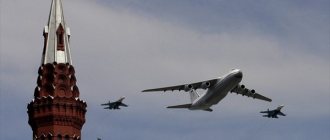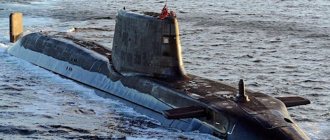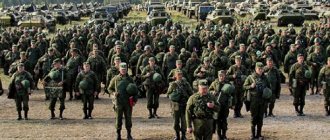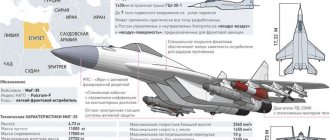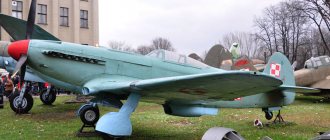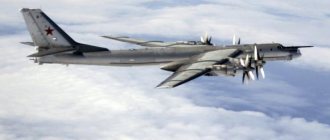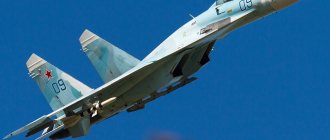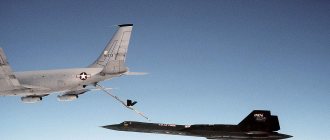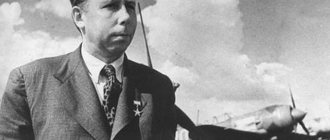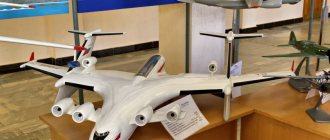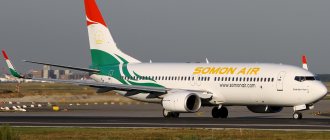Today marks the 115th anniversary of the birth of the outstanding aircraft designer Alexander Sergeevich Yakovlev. Under his leadership, over 200 types and modifications of aircraft were created. In total, more than 70 thousand Yak aircraft took to the skies.
As Yakovlev himself admitted, his path in aviation was not easy. But he always continued to dream: “It is in dreams that new ideas, plans for new designs, ways to implement them are born... To achieve a dream come true is the greatest meaning of a person’s life, and especially of a designer.” Read about the contribution of this purposeful dreamer to the development of world aviation in our material.
Biography
Contemporaries and historians call Yakovlev a rather controversial person. But at the same time, it is impossible to overestimate the importance of this purposeful dreamer for world aviation.
Family
Alexander Yakovlev was born on the first day of April 1906 into a family of hereditary honorary Moscow citizens. His grandfather, Vasily Afanasyevich, owned a candle shop and supplied his goods to the Bolshoi Theater. Sergei Vasilyevich Yakovlev graduated from the Alexander Commercial School, and then worked at the Nobel brothers oil company. Nina Vladimirovna, the mother of the future designer, ran the household.
At the age of 5, Alexander successfully passed the entrance exams to one of the best private gymnasiums in Moscow. The boy successfully mastered school subjects, but achieved the greatest success in studying the following disciplines:
- story;
- geography;
- literature;
- drawing.
At the same time, the young man received good grades in technical and natural subjects. In his memoirs, Alexander Sergeevich noted that his mother instilled a love of learning in him.
In 1938, the already accomplished designer married pilot Ekaterina Mednikova. A year before, a girl on a Yakovlev AIR-9 plane set a speed and altitude record for women's aviation. The couple had two sons, who passed on their passion for aviation. The eldest son, Sergei Alexandrovich, worked under the leadership of his father, being responsible for the development of sports cars.
Soviet aircraft designer Alexander Yakovlev
Career
Alexander Sergeevich became interested in aviation during his school years. The first aircraft, created by a young man from wooden slats and paper, flew 15 m. During these same years, the future head of the design bureau began to show organizational skills by organizing the “Friends of Aviation” school circle, which was part of the all-Union society.
The young man dreamed of entering the Air Academy after graduating from school. But on the way to his dream he faced two obstacles:
- Only military personnel were accepted into the educational institution;
- The main disadvantage for the selection committee was the non-proletarian origin of the applicant.
In 1924, Alexander Sergeevich achieved his first significant success in aircraft design. The AVF glider he designed, named after the Air Fleet Academy, took part in glider competitions in the Crimean Koktebel. The Yakovlev project received one of the awards, and then for many years Soviet aviators mastered gliding using this model. After the Crimean success, the young designer enlisted in the Soviet army, first performing the duties of a worker and then a mechanic at the flight academy. Combining his work responsibilities with his passion for aircraft design, he soon developed his first aircraft, the AIR. Yakovlev presented it in 1927 in Sevastopol. And on May 12, his plane made a fifteen-hour flight to the capital. At the helm of the aircraft sat the famous pilot Yulian Piontkovsky, who believed in the talented young man who shared the flight time with him.
A successful test opened the doors of the Air Academy to a young designer with the wrong origin. From 1927 to 1931, Alexander Yakovlev was a student at the country's main aviation university.
After graduating from the academy, the young designer, who during his studies developed one aircraft a year, received the position of engineer at Plant 39. The active and talented young man gathered around him people who were also passionate about aviation, with whom he worked on his developments in his free time. The result of the work of this group was AIR-6, which was used in the following qualities:
- propaganda model;
- sanitary board;
- passenger ship for local transport;
- research machine;
- communication board.
In 1935, Yakovlev’s group achieved another brilliant result in the development of domestic aircraft manufacturing. The seventh modification of the AIR surpassed existing Soviet fighters and some foreign models in terms of speed. Thanks to this success, a new design bureau emerged, headed by twenty-nine-year-old Alexander Sergeevich. But a few months later, during one of the flights, the new plane under the control of Piontkovsky crashed, in which the famous pilot almost died. This event became a test for the young leader. His team was transferred to the building of a former furniture workshop. But thanks to Yakovlev’s organizational skills, he was able to build a world-famous aircraft factory on this site, distinguished by its particular accuracy and production culture. At the end of this year, the young engineer receives the title of chief designer. He held this post for 21 years.
During the difficult war years for the country, A. S. Yakovlev served as Deputy People's Commissar for the Aviation Industry, responsible for new equipment. In this role, in the first years of the war, he was involved in organizing production at aircraft factories evacuated to Siberia.
In 1946, Yakovlev considered that he could no longer combine two responsible positions and submitted his resignation from the post of Deputy Minister of Aviation Industry. The petition was granted, and the designer was able to devote all his attention to his favorite business - the development of aircraft. Yakovlev headed the design bureau until 1984. The famous designer retired in 1984. After 5 years, he died in his apartment in Moscow and was buried at the Novodevichy cemetery.
A.S. Yakovlev at the AIR-2 aircraft. 1928
“We persistently strived for the goal”
After graduating from the academy, Yakovlev was assigned to plant No. 39 named after. Menzhinsky, one of the largest aircraft manufacturing centers in the capital. Alexander refuses offers from eminent designers to join their teams - dreams of his own cars haunt Yakovlev, and he goes to the plant as an ordinary engineer. Again showing his talent as a leader and an excellent negotiator, Yakovlev gathers a team around him and negotiates support for his projects with Osoaviakhim and Aeroflot.
In a semi-legal manner, Yakovlev’s department created the AIR-7 aircraft in 1932, one of the first successful monoplanes in the USSR, which set a speed record in its class. However, it was this unprecedented speed breakthrough that led to an airplane accident, which almost cost the young designer his career. Yakovlev's light aviation group literally survives from the territory of the aircraft plant. But Alexander Sergeevich does not give up, he boldly turns to the highest authorities and seeks support there. True, it’s peculiar: his group is given space... in a bed workshop.
As Yakovlev himself wrote, “we were young, full of thirst for activity and passionately loved aviation... so we agreed.” Here, in the bed workshop, the AIR-9, AIR-9 bis and AIR-10 aircraft are created, which became the prototypes of the well-known two-seat aircraft UT-2 (trainer, two-seat). Yakovlev's training aircraft was produced from 1938 to 1948.
Since 1935, Alexander Sergeevich has been the chief designer. By 1936, the position of the Yakovlev Design Bureau was strengthening, they already had their own construction site in Leningrad, bedmakers vacated space in Moscow. Thanks to Yakovlev, light-engine aviation in the Land of the Soviets is on the rise.
Aircraft
The design bureau, which was headed by Alexander Sergeevich Yakovlev for 70 years, developed more than 200 aircraft and their modifications. The most famous of them are:
- Aircraft from the AIR line are the first development of designer Yakovlev, named after Alexei Ivanovich Rykov. After the execution of the famous People's Commissar, the abbreviation began to be pronounced as the English word meaning air. Total from 1927 to 1940 20 modifications of this vessel were developed. AIR-1 was built in a single copy. But 50 years after the first flight, a copy was made, which is currently located in the Moscow Museum of Technology near the Arkhangelskoye estate. The first production vessel of this line was the AIR-6 model, which was used as an air vehicle connecting remote areas of the country with regional centers.
- UT-1 and UT-2 are aircraft used for training and training flights for Soviet pilots. The UT-1, developed on the basis of the AIR-16 model, was used during the war as a light attack aircraft. The ships, which were equipped with machine guns and suspensions designed for 4 bombs, played a big role in the fight against the Nazis in the southern theater of military operations. Both modifications were produced from the late 30s to the late 40s.
- The first combat aircraft developed by specialists from the Yakovlev Design Bureau was the I-26, which in mass production was called the YAK-1. The lightweight side was distinguished by improved speed and maneuverability. The obvious advantage of the Yakovlev fighters was their simple production, which can easily be transferred to any woodworking workshop. “Hawks” became most widespread in the 40s. 40,000 Yak-1, 3 and 9 models fought on the fronts of World War II.
- In the post-war years, one of Yakovlev's most successful developments was the Yak-25, capable of patrolling borders in all weather conditions and detecting targets at a distance of 30 km. It was the prototype for military aircraft used to perform various tactical missions.
- In the 60s Yakovlev Design Bureau began work on developing an aircraft with vertical takeoff and landing. In 1967, the Yak-36 made its first flight in Domodedovo. 10 years later, the improved Yak-38, designed for takeoff from the deck of an aircraft carrier, entered service with the Allied Air Forces. At the end of the 80s. The development of a supersonic VTOL aircraft began, but due to the collapse of the USSR and lack of funding, the project was not completed.
- In 1951, the designers of the Yakovlev bureau developed a passenger helicopter designed for 30-40 passengers. At the time of launch into mass production, the aircraft designated Yak-24 was the most powerful helicopter in the world. Its modifications were used both in the military department and in civil aviation. The reliable car was in operation for 10 years, during which there was not a single crash with human casualties.
- In addition to military vehicles, the Yakovlev Design Bureau was developing vehicles for civilian transport. At the end of the 60s. The first Soviet passenger aircraft appeared, which passed international certification and was used by Western European airlines. The Yak-40 was actively used in local and international transport until the early 80s. It was replaced by the Yak-42. Both modifications continue to be used by domestic and foreign carriers.
Helicopter Yak-24
Interesting: during the operation of passenger Yaks, several dozen accidents occurred that claimed the lives of more than a thousand people. One of the most famous accidents of aircraft of this brand was the crash of board 42434 in September 2011 in Yaroslavl. As a result, all members of the local hockey team "Lokomotiv" died.
“I want to work and work to penetrate further and further into the unknown”
The first post-war years were marked by the beginning of the jet era in aviation. Yakovlev’s team began work on their jet fighter immediately after the victory. The Yak-15, which flew in April 1946, became the first fighter in service with the USSR Air Force. A little later, the Yakovlev Design Bureau developed the Yak-17UTI, Yak-23, the first all-weather interceptor Yak-25 with a record flight duration, the first supersonic reconnaissance aircraft Yak-27R, and the Yak-28 family of supersonic aircraft.
After the fighters, the Yakovlev Design Bureau began to create civilian vehicles. In 1968, the 32-seater “winged bus” Yak-40 entered passenger lines of the Union. It became the only Soviet aircraft to be certified according to Western airworthiness standards and exported to Western European countries. After the success of the Yak-40, the Yakovlev Design Bureau will develop the 120-seat passenger Yak-42, which still serves airline flights today.
During his entire work, Yakovlev created about 200 types of aircraft, more than 100 of which were mass-produced. Alexander Sergeevich devoted more than half a century of his life to his design bureau - from 1935 to 1984. The life of the outstanding aircraft designer ended on August 22, 1989.
Yakovlev's main qualities were dedication and hard work. Alexander Sergeevich realized early on that to succeed in his business he needed to be not only a good designer, but also a public person - he was a prominent popularizer of aviation, moved in high circles, wrote articles and books. The dream of creating new, more advanced aircraft drove him all his life. He said it best himself: “When I built the glider, I was overcome by an irresistible desire to design an airplane. Then I wanted to make another, better one, then a third... You build a car and think: “If only it would fly, I don’t need anything else in my life!” But now the car is finished and begins to fly, a new desire is born - to make another plane so that it flies even faster, even better..."
Modern developments
Today, specialists of the Yakovlev Design Bureau continue the traditions laid down by the founder of the enterprise. Their latest projects are the following models:
- In 1993, the development of a new passenger aircraft, the Yak-242, began. Due to insufficient funding, the project was frozen for a long time. After 20 years, it became the basis for the MS-21 project, which was developed by the Yakovlev Design Bureau and the Irkut Aviation Corporation. The new passenger ship made its first flight in 2022. It is planned to launch several modifications into serial production, differing in fuselage length, number of seats and cabin comfort. One of the main customers of the new aircraft is, which ordered 85 aircraft. Due to the impact of international batches, the start of mass production was postponed to 2022.
- Yak-201 is a preliminary design of a VTOL aircraft, in which advanced technical developments were used. Lack of funding prevented the work from continuing. There is an opinion that the design documents of Russian specialists were at the disposal of American designers working on the F-35 project, so this fighter can be considered the embodiment of the Yak-201 project.
- In 2014, specialists from the Aviation Bureau named after. Yakovlev began developing a modern training aircraft used for the initial training of military and civilian pilots. Since 2016, air and ground tests of prototypes began. Its main customers are the Ministry of Defense of the Russian Federation, the Russian and Belarusian DOSAAF. These structures will approximately receive more than 300 vehicles.
Yakovlev Yak-242 (MS-21)
↑ Birth. First steps on the path to a profession
A. Yakovlev was born on March 19, 1906 in Moscow. While studying at school, he began studying in an aviation club, where he designed his first flying aircraft model. Then A. Yakovlev was 16 years old. At the age of 18, he created his first glider, AVF-10, and was recognized as the best in the USSR based on the results of the competition. The glider made its first flight on September 15, 1924. This day is considered the date of foundation of the A. Yakovlev Design Bureau. In the same year, A. Yakovlev began working at the Air Force Academy. NOT. Zhukovsky. He made repeated attempts to become a student at this academy, but was rejected each time due to his ignoble origin. In 1927, on May 12, the first tests of the aircraft designed by the AIR-1 were carried out.
Criticism of activities
The figure of Alexander Sergeevich Yakovlev caused controversial opinions among both his contemporaries and today's aviation enthusiasts. The main stream of criticism is related to the trusting relationship that the young designer had with the head of the Soviet state, I.V. Stalin. Contemporaries accused Yakovlev of the following events:
- Arrest in October 1937 of aircraft designer Tupolev. After Stalin’s death, thoughts began to appear in his memoirs about Yakovlev’s involvement in repressions among aviators, based on his denunciations and information from books. It should be noted that the designer’s communication with Stalin began in 1939, that is, after Tupolev’s arrest. And the designer wrote his autobiographical books, which critics refer to, in the post-war years, so they could not become a source of information for repressions in the late 30s.
- The reason for the criticism was the activities of Alexander Sergeevich as deputy head of the People's Commissariat of the Aviation Industry. Detractors claimed that he interfered with the advancement of projects of other designers. His defenders note that Yakovlev was in charge of an experimental department and could not influence mass production. Significant is the letter of 1943, in which he recommended starting serial production of the I-185 machines developed at the Polikarpov Design Bureau. Despite this, it was Yakovlev who was later accused of freezing this project.
- Modern critics of the aircraft designer's activities speak of the lack of successful projects in his bureau after Stalin's death. At the same time, they ignore the fact that in the post-war years the Yakovlev Design Bureau coped with tasks that other designers did not undertake. These include the development of an aircraft with vertical take-off and landing.
37874 12/01/1944 Aircraft designers Alexander Sergeevich Yakovlev (left) and Artem Ivanovich Mikoyan look at the magazine. Alexander Kapustyansky/RIA Novosti
It should be noted that critics and ill-wishers reflected the position of the new party leaders who disliked Alexander Sergeevich. This was explained by the aircraft designer’s reluctance to adapt to the existing political situation and refusal to support criticism of Stalin’s policies.
Alexander Sergeevich Yakovlev
Alexander Sergeevich Yakovlev
Alexander Sergeevich Yakovlev (1906 - 1989) - an outstanding Soviet aircraft designer who created his own school of aircraft engineering, Colonel General of Aviation (1946), Academician of the USSR Academy of Sciences (1976), twice Hero of Socialist Labor (1940, 1957), six-time winner of the Stalin Prize (1941, 1942, 1943, 1946, 1947, 1948), laureate of the Lenin Prize (1972), in 1938 joined the CPSU (b). In 1940-46 he simultaneously served as deputy. People's Commissar of the Aviation Industry, was chairman of the Scientific Council of the Ministry of Aviation Industry (1946-1948), head of the department of aircraft design and construction at the Moscow Aviation Institute (1944, 1958), chairman of the editorial board of the journal Air Fleet Technology (1942-1947).
Under the leadership of Yakovlev, the Yak-1, Yak-3, Yak-7, Yak-9 fighters, BB-22, Yak-28, UT-2 bombers, etc. were created. He prepared the 1st all-weather interceptor, the 1st Soviet vertical take-off aircraft, the Yak-40 helicopter, etc. In 1946 he was elected to the Supreme Soviet of the USSR. Since 1956 general designer.
In total, under the leadership of Yakovlev, about 200 types and modifications of aircraft were created, of which more than 100 entered mass production. These include the piston Yak-1, -7, -9, -3 and dozens of their serial modifications, as well as jet fighters Yak-15, -17 and others, the Yak-25 is the first all-weather interceptor; Yak-27R - the first supersonic reconnaissance aircraft; The Yak-28 is the first supersonic front-line bomber, also known as an interceptor; the first Soviet vertical take-off and landing aircraft, the Yak-36 and its carrier-based version, the Yak-38; jet passenger Yak-40, -42; sports, training, as well as twin-rotor helicopter Yak-24 and others.
Moscow Kremlin. Cathedrals, 1894 Russian artist Apollinary Mikhailovich Vasnetsov
Born on April 1, 1906 in Moscow. His father was Sergei Vasilievich Yakovlev, an accountant by profession, who served as head of the transport department in the oil industry. Mother, Nina Vladimirovna Yakovleva, was a housewife. The family had three children: sons Alexander, Vladimir (1909) and daughter Elena (1907). Alexander Sergeevich’s parents had the title of “hereditary honorary citizens,” which in those years was granted by imperial decree to representatives of the clergy and philistinism.
“I could not inherit the design vocation from my ancestors. At the age of five, I saw an airplane for the first time, but this acquaintance did not leave any trace in the soul of the future designer,” Yakovlev admitted in his memoirs. But “screwing and unscrewing things was my passion. Screwdrivers, pliers, and wire cutters were the objects of my childhood desires, and the ultimate pleasure was the ability to twist a hand drill.” Mom, Nina Vladimirovna, predicted a career as an engineer for her son. But for now he had a variety of hobbies.
In 1914, Alexander Yakovlev, having successfully passed the entrance exams in the Russian language, arithmetic and the law of God, entered the preparatory class of the private male Strakhov gymnasium, located on Spasskaya Street. In those years, this gymnasium was considered one of the best in Moscow; it was distinguished by well-equipped classrooms and excellent teachers. After the October Revolution, the gymnasium was combined with a girls’ school, it became a state school, receiving the new name “Unified Labor School of the 2nd level No. 50” in the Sokolniki district of the capital. The future famous designer studied with great eagerness. At the same time, the boy’s favorite subjects were history, literature and geography; in these subjects he always had excellent grades, and in physics, mathematics and chemistry, which were more suitable for his future specialty, he mostly received fours. Alexander Yakovlev also loved drawing, which was quite important for the designer. In this subject, encouraged by his teachers and mother, he managed to achieve great success.
Konstantin Yuon. “Domes and Swallows” 1921 Oil on canvas. 71 x 89 cm State Tretyakov Gallery
During his studies, Alexander Yakovlev was a fairly active student, taking part in public school life, he was the head of the class, the chairman of the student committee, for some time he was the editor of the school literary and historical magazine and a member of the drama club. I read quite a lot. He read the works of Jules Verne, Herbert Wales, Jack London, Rudyard Kipling and other authors, loved books on the history of Russia and, of course, about various types of technology. He showed a special interest in technology.
From top to bottom: AIR-1 in its original form, after conversion into a single-seat record machine and the second copy of the aircraft - AIR-2 “Pioneer”. Yakovlev built this airplane with funds collected by subscription from the children's newspaper “Pionerskaya Pravda.” After its construction, Yakovlev received the title of “honorary pioneer” with the right to wear a pioneer tie.
During his school years, he even tried to build a perpetual motion machine, attended classes in a radio club, where he assembled a radio receiver with his own hands. He also mastered carpentry, enthusiastically creating models of steam locomotives, stations, bridges, and railway cars. The influence of his uncle, a railway worker, was felt; at that moment Alexander Yakovlev wanted to follow in his footsteps, becoming a railway engineer.
But then came the 20s of the 20th century. In the young Country of the Soviets, a strong interest in aviation flared up. He also captured Yakovlev, the 17-year-old young man firmly decided to become an aircraft designer. Having read in the newspapers about the upcoming glider competitions in Crimea, Alexander wanted to take part in the construction of a glider. The purposeful young man turned to the competition organizer Artseulov, and he arranged for him to be an assistant to the pilot N.D. Anoshchenko. Unfortunately, the first attempt at building a “real glider” was unsuccessful.
In Koktebel, the glider left the ground only a few meters and crashed. The failure did not upset Yakovlev; on the contrary, the sight of the hovering machines made a huge impression on him: “Now I have finally become an aviation person. My choice of profession was irrevocable.”
“Aircraft modelers”, B.V. Milovidov, 1934
Alexander was inspired by the idea of making a glider himself. For technical advice, he turned to S.V. Ilyushin , then still a student at the Air Fleet Academy, and built the car itself on the basis of a school aircraft modeling club. The design turned out to be successful, “the glider was stable in the air and obeyed the rudders well.” The designer and his assistants were given a prize of 200 rubles. and a diploma. But to enter the only higher educational institution in aviation at that time, the Air Force Academy. NOT. Zhukovsky , it was not possible, he had no length of service in the Red Army.
Soviet poster “Komsomolets, young worker, pioneer!..”
In March 1924, with the help of Ilyushin A.S. Yakovlev got a job as a simple worker in the workshops of the Air Fleet Academy, and two years later he achieved his transfer to the flight squad, to maintain aircraft. In the same 1926, he entered the Academy. Zhukovsky.
On May 12, 1927, the first flight of the aircraft designed by Yakovlev took place. The plane was built in the large hall of the laboratory building by an undergraduate student. And when the car took off and made several circles over the airfield, Alexander Sergeevich felt like a real designer.
The plane with the designer on board made a sport flight Moscow - Kharkov - Sevastopol - Moscow. In total, over the years of training, he designed four original aircraft.
In 1931 A.S. Yakovlev graduated from the academy with first class qualifications. The young engineer was sent to the plant named after. V.R. Menzhinsky , at the Central Clinical Hospital. A strong group of aeronautical engineers worked here at that time. He was offered to work in a promising design team, which meant working in one narrow area. Yakovlev did not want this, so he transferred to the position of an ordinary engineer. At the same time, Alexander Sergeevich, in his free time, at his own risk, builds the AIR-6 aircraft, which successfully passed tests and was put into serial production.
Ufimtsev Viktor Ivanovich (1899-1964) sketch of the poster “Soviet Paratroopers” 1930s
Then there was AIR-7. On a test flight in the summer of 1932, it showed a speed of 332 km/h. This was already a record; the young designer managed to create one of the fastest aircraft. But on the second flight, the plane crashed due to an error made during the design: after all, Yakovlev created such a high-speed machine for the first time. The accident investigation commission was inexorable, its verdict read: “Prohibit Yakovlev from engaging in design work.”
A.S. Yakovlev, defending his work, was not at a loss. He obtained an appointment with member of the Politburo of the Central Committee Ya.E. Ruzutaka , to whom he outlined the situation. The intervention of a government member bore fruit - a design bureau of 35 people headed by A.S. The Yakovlevs were given a room - a bed workshop. Here in 1934 - 1935. aircraft AIR-9, AIR-9 bis, AIR-10 were created. AIR-9 was recognized as the best in its class at the Paris Aviation Exhibition. In 1936, the successes of the design team became so obvious that they were given money to build a good assembly shop and premises for a design bureau. A foundation was laid for an enterprise that became the founder of a series of not only sports, but also combat aircraft, which played a role during the Great Patriotic War.
Rudenko Valery. Yak-1 fighter.
Yakovlev not only creates his own aircraft, but also gains experience from famous designers of that time. This is evidenced by his foreign business trips in the 1930s - Italy, France, England, Germany. By the way, in Germany, Alexander Sergeevich met with the famous aircraft designer Messerschmitt, and in 1940 he attended a reception with A. Hitler himself.
In 1939, after a meeting in the Kremlin on the development of Soviet aviation, the Yakovlev Design Bureau began creating military aircraft. In 1939, a short-range bomber was created - the BB. Stalin became interested in the designer’s activities and from then on often called him to his place to discuss aviation problems and personal conversations.
In 1940, the first high-speed fighter I-26 was created, which was renamed Yak-1 in serial production.
Rudenko Valery. Yak-1B fighter.
(Thanks to the invaluable experience that was accumulated in the process of designing and building training aircraft, the design bureau, which was headed by Yakovlev, was able to move on to the development of fighter aircraft. The first such combat vehicle was the I-26, which was significantly different from the aircraft created in other design bureaus of the country of this class. It had a wooden wing, duralumin tail and a welded (from pipes) fuselage frame. For better flow around the tubular frame of the fuselage, gargrots with skin were installed directly on top of the tubular frame of the fuselage.
Zhirnov Andrey. Yak-1 fighter.
Like all aircraft of Alexander Yakovlev, the I-26 aircraft was distinguished by its low weight and thoughtful, one might even say elegant, design forms, which became his calling card. The fighter was equipped with a water-cooled engine designed by V. Ya. Klimov, which had a low weight and small dimensions. In forced mode, the engine developed power of 1240 hp. - a very worthy indicator for those years. This combat aircraft went into mass production under the designation Yak-1. At an altitude of 3400 meters, the fighter developed a maximum flight speed of 600 km/h, its armament consisted of a 20 mm cannon and two 7.62 mm machine guns. The creation of the Yak 1 aircraft was a great achievement for the entire domestic aircraft industry.
Soviet poster “Fly higher than everyone else. Farthest from everyone. Fastest"
Somewhat earlier, back in 1939, the design bureau under the leadership of Yakovlev designed and built the Yak-2 high-speed bomber, and then the Yak-4. The latest modification with two water-cooled engines reached a speed of up to 567 km/h, which was the maximum value for military aircraft produced in the Soviet Union at that time. Just over 200 twin-engine bombers Yak-2 and Yak-4 were built. They managed to take part in the first battles of the Great Patriotic War, but most of them were lost in the first week of hostilities.
Already during the war years, the Yakovlev Design Bureau carried out a large amount of work to improve the aerodynamics of the Yak-1 aircraft and rational design, which made it possible to design a fighter with a flight weight of 2650 kg and high maneuverability and speed characteristics. This aircraft was the no less legendary Yak 3. The flight range of this fighter was 900 km. With the boosted V. Ya. Klimov VK 105PF engine, the fighter could reach a speed of 660 km/h, and with an even more powerful VK 107 engine - up to 720 km/h.
Rudenko Valery. Yak-3 fighter.
Upon completion of the tests of the aircraft with the VK 107 engine, a conclusion was drawn up, which noted that, according to basic flight performance data in the altitude range from the ground to the practical flight ceiling, the aircraft is the best of the Soviet and foreign fighters built. This vehicle began arriving in combat units in 1943. It was the most maneuverable and lightest fighter of World War II. It was on Yak-3 aircraft that French volunteer pilots from the famous Normandie-Niemen regiment flew.
Soviet poster
Also, already during the war, to provide reliable cover for bomber aviation, the Yakovlev Design Bureau designed an escort fighter that had heavier weapons and a longer flight range than ordinary Yak-1 and Yak-3 fighters.
This aircraft was the Yak-9, which was armed with a 37 mm cannon and two large-caliber 12.7 mm machine guns. The fighter's flight range reached 1000 km. During the Great Patriotic War, Yak-9 fighters were also widely used for attacks on ground targets.
For example, Yak-9T vehicles were armed with 45-mm cannons. And the appearance in the Air Force of the Yak-9D and Yak-9DD aircraft, which had a flight range of 1400 and 2200 km, respectively, made it possible to provide support for the Soviet troops in the offensive, which was especially important in the final stage of the war.
In total, more than 40 thousand Yak fighters of various models were built during the war years. To compare the equally popular Lavochkin , just over 22 thousand were created. Thousands of Soviet pilots fought on Yak fighters, winning victories in the air over German aces on Messerschmitts and Fockewulfs, for which Alexander Sergeevich Yakovlev was of considerable personal merit. (Military Review))
Rudenko Valery. Transport aircraft Yak-6M.
During the Great Patriotic War, aircraft designers were given the task of inventing a fighter that would successfully operate against the Messerschmitts and Fockewolves. And the Yakovlev Design Bureau designed the Yak-3 fighter, which had high speed (up to 720 km/h), excellent maneuverability and was the lightest aircraft of World War II.
Zhirnov Andrey. Yak-9 fighter.
Since 1943, these aircraft began to be mass-produced for the front. At the same time, the Yak-9 fighter was released, which was intended to escort and cover heavy bombers. Two of the three Soviet fighters of the Great Patriotic War were designed by Yakovlev. In total, during the war years, Yakovlev’s aircraft were assembled at 14 aircraft factories, which supplied an average of 38 aircraft per day to the front.
Soviet aircraft (Combat aircraft of the USSR). Set of postcards 1984 Artist: V.M. Ivanov
Immediately after the war, Yakovlev Design Bureau began working on a new generation aircraft with a turbojet engine, the Yak-15 jet fighter. In April 1946, the first test flights of the new aircraft were carried out. And in May 1947, the Yak-15 became the first Soviet jet aircraft to pass state tests with a positive rating and be put into service.
Until July 1946, Alexander Sergeevich, while leading his design bureau, simultaneously worked as Deputy People's Commissar of the Aviation Industry for Experimental Aircraft Construction and Science, and from March of the same year - Deputy Minister of Aviation Industry for General Issues. In July 1946, due to the heavy workload and busyness at the design bureau, he left this position of his own free will. From 1935 to 1956 he was the chief designer of the design bureau, and from 1956 until his retirement in 1984 he served as general designer.
(After the end of World War II, aviation was re-equipped with jet technology. The first jet fighter to enter service in the USSR was the Yak-15 fighter. After it, the Yakovlev Design Bureau designed the Yak-17UTI, Yak-23, Yak-25 - the first in The USSR's all-weather interceptor, the high-altitude Yak-25RV, and the first Soviet supersonic reconnaissance aircraft, the Yak-27R, were followed by the Yak-28 family of supersonic aircraft, which included the USSR's first supersonic front-line bomber.
Rudenko Valery. Yak-9B fighter.
The scope of the OKB's activities also expanded, so the Soviet Army received landing craft - the Yak-14 glider and the Yak-24 helicopter, which in 1952-1956 held the title of the most load-lifting in the world. (Military Review))
Soviet aircraft (Combat aircraft of the USSR). Set of postcards 1984 Artist: V.M. Ivanov
In the 1950s A.S. Yakovlev and his design bureau released the Yak-25, an all-weather loitering interceptor. And on its basis, a whole series of serial supersonic Yak-28 aircraft for various purposes was then created, among which was the first supersonic bomber.
Alexander Sergeevich was interested not only in military aircraft, he was also attracted to civil aviation. On October 21, 1966, the Yak-40 jet aircraft, designed to serve short intra-Union lines, took off for the first time. In 1967, this aircraft was exhibited at the Le Bourget air show and earned the highest ratings from international experts. Then the short-haul passenger Yak-42 was created, which still flies today.
(But Yakovlev and his design bureau became famous not only for military equipment; civil aircraft were also created here. For example, they gave birth to a whole generation of light-engine aircraft: the multi-purpose Yak-12, the training Yak-11 and Yak-18, the first in the Soviet Union of training and sports aircraft Yak-30 and Yak-32. Since 1960, performing on the Yak-18P, Yak-18PM, Yak-18PS and Yak-50 aircraft, Soviet pilots many times stood on the podium at the European and world championships in the highest aerobatics
Zhirnov Andrey. Training fighter Yak-11.
Separately, mention can be made of the Yak-40 passenger aircraft, which began transporting passengers in 1968. At that time, it was the only aircraft in the USSR that was certified according to Western airworthiness standards and was purchased by Germany, Italy and other countries. Later, the OKB would create a 120-seat passenger aircraft, the Yak-42, which was highly economical; this aircraft is still used by Russian airlines.
Passenger aircraft Yak-40. Artists G. Tovstukha and A. Minengov. — Fine arts, Moscow 1979
Separate mention can be made of vertical take-off and landing aircraft (VTOL). In 1967, during a parade in Domodedovo, the first Soviet VTOL aircraft, the Yak-36, was shown. Since 1976, the Yak-38 vertical and short take-off and landing combat aircraft began to enter service with the Kyiv class cruisers, which became the world's first carrier-based aircraft of this type. (Military Review))
In the 70s, OKB A.S. Yakovleva paid special attention to the development of aircraft with short or vertical takeoff and landing. This is how the unique Yak-38, based on aircraft carrier cruisers, appeared. Since 1972, the aircraft was adopted by the USSR Navy.
Pokhodaev Yuri Arkhipovich (Russia, 1927) “Airport Club” 1971
In 1984, at the age of 78, the famous aircraft designer retired and died on August 22, 1989, and was buried at the Novodevichy Cemetery in Moscow.
But Alexander Sergeevich Yakovlev left a good legacy - his design bureau, where his students and followers work. Where his words sound like a motto: “I want to work and work in order to penetrate further into the unknown, reaching new heights. This is both the meaning and purpose of a designer’s life.” (From the book “100 Famous Muscovites,” 2006)
Alexander Yakovlev is the author of the books “The Purpose of Life”, “Stories of an Aircraft Designer”, “Soviet Aircraft” and others. They were released in our country and in 12 foreign countries with a total circulation of more than three million copies.
Valery Rudenko. Soviet multi-role aircraft Yak-12A
There is a memorial plaque on the house where he lived in Moscow. A bronze bust of Alexander Yakovlev is installed in Moscow opposite the building of the design bureau, which he led for many years. In 1990, this design bureau was named after aircraft designer Alexander Yakovlev. In 2006, a street in the Northern Administrative District of Moscow was named after him.
Valery Rudenko. Soviet fighter Yak-25M
Criticism of activities
A. S. Yakovlev had a special relationship of trust with I. V. Stalin . In his memoirs, Yakovlev gives the following dialogue with him:
Already from the beginning of the summer of 1939, Stalin began to call me for consultation on aviation matters. At first, I was embarrassed by the frequent calls to the Kremlin for confidential discussions of important issues, especially when Stalin directly asked: “What do you think about this issue?” He sometimes puzzled me, asking for his opinion about this or that employee. Seeing my predicament, embarrassment and wanting to encourage me, he said: “Say what you think and don’t be embarrassed—we believe you, even though you are young.” You are an expert in your field, you are not associated with the mistakes of the past, and therefore you can be more objective than the old specialists, whom we trusted very much, but they led us and aviation into a swamp. It was then that he told me: “We don’t know who to believe.” - A. S. Yakovlev. The purpose of life. Chapter "First Fighter"
Indyukhov Nikolay Petrovich (1932-2010) Zaripov Ildar Kasimovich (1939-2012) “Aerodrome” 1970
These relations after the death of I.V. Stalin caused attacks on Yakovlev from some of his colleagues who suffered from repressions. For example, designer L. Kerber wrote:
“We were all tormented by the question, who contributed to the arrest of Tupolev ? This question still worries many aviation workers... There is no doubt that the arrest could not have happened without Stalin’s sanction, but in order to obtain it, the authorities needed to accumulate materials... The most active informant about the “dubious” aspects of Tupolev’s activities was A. S. Yakovlev. He had his own original method: denunciations were generously scattered throughout the pages of his books. Further facts are borrowed from them. Absent-minded - they do not convince of Tupolev’s malicious intentions. Put together, they look different.”[5].
Rudenko Valery. Yak-9U fighter.
It should be noted that Kerber is clearly mistaken in this case, since Tupolev was arrested on October 21, 1937, and Yakovlev began to be summoned to the Kremlin only in 1939; Yakovlev began writing books only in the post-war years. Therefore, denunciations could not be “scattered” on their pages.
Yakovlev understood that in the position of Deputy People's Commissar for Experimental Aircraft Construction he could become the object of accusations of bias and “overwriting” other aircraft designers[6].
This is what happened later. It was argued (in more detail below) that Yakovlev, fearing competition, “curtailed” some possibly promising works of other aircraft designers, among which are mentioned SK-1 and SK-2 by M.R. Bisnovat, RK-800 (Sliding wing 800 km/h) G.I. Bakshaev (1940) and so on. Designer A. S. Moskalev in his memoirs[7] blames Yakovlev for stopping work on his projects of the ultra-light fighter SAM-13 (spring 1941) and supersonic RM-1 (1946).
Rudenko Valery. Yak-9T fighter.
Especially often in modern sources[8][9][10] Yakovlev’s “fatal” role in the fate of the I-180, I-185 fighters designed by N.N. Polikarpov . This version seems doubtful simply because of the discrepancy in dates. Yakovlev could not be responsible for the problems of the I-180 program in 1939, since during this period he had nothing to do with the leadership of the USSR aviation industry and held the post of chief designer of the small design bureau of plant No. 115[11]. The version about Yakovlev’s opposition to work on the I-185 also does not find documentary evidence; Moreover, Yakovlev’s letter to A.I. Shakhurin dated March 4, 1943 is known with a recommendation to urgently begin mass production of this aircraft:
Rudenko Valery. Yak-9DD fighter.
“The situation with our fighter aircraft is very alarming. Our production fighters, which have advantages in flight performance over the enemy fighters known to us up to an altitude of 3000 meters, at all altitudes above 3000 meters, and the higher, the more, they are inferior to enemy fighters.
Rudenko Valery. Yak-9K fighter.
It should be expected that by the beginning of summer the enemy will be able to create small groups of lightweight Messerschmitt-109-G2 and Focke-Wulf-190 fighters, with which our serial fighters will find it difficult to fight at altitudes from the ground to 3000 meters. The experience of the air war for Stalingrad shows that the appearance of even two dozen Messerschmitts with superior qualities compared to our serial fighters had an extremely severe impact on the combat effectiveness of our fighter units;
Yak-15 fighter
Therefore, I believe that it is necessary to immediately, without wasting a minute, report this issue to the State Defense Committee and obtain permission to build by the beginning of summer two or three dozen fighters with flight and combat qualities that are obviously superior to those of possible improved enemy fighters, for parrying the actions of enemy strike fighter units.
For this purpose, it is necessary to immediately begin mass production of I-185 fighters, as well as Yak aircraft with M-107-A engines, in such a way as to provide the front with at least 20-30 aircraft of each type by May. The I-185 and Yak aircraft with the M-107A engine, having approximately the same speed of 570-590 km/h at the ground and 680 km/h at an altitude of 6000 m, should provide unconditional superiority over possible modifications of improved enemy fighters.
Yak-23 fighter
Apparently, this issue has not yet acquired the necessary urgency for the reason that the Air Force has not apparently realized the seriousness of the current situation with fighter aircraft and does not require a specific resolution. In particular, the possibility cannot be ruled out that at any moment enemy bombers accompanied by Messerschmitt-109-G fighters will appear over any of our cities located within 200 km from the front, which will bomb in broad daylight from an altitude of 6000 meters with complete impunity, and we will not be able to provide any resistance, due to the significant superiority of enemy fighters at this altitude over our serial fighters in service. I emphasize the urgent need to immediately report this issue to the State Defense Committee."[12]
It should also be noted that as Deputy People's Commissar Yakovlev was in charge of issues of experimental aircraft construction, while issues of serial production were in charge of two other deputies - P. V. Dementyev and P. A. Voronin.
Fighter-bomber. Artists G. Tovstukha and A. Minengov. — Fine arts, Moscow 1979
Yakovlev about Stalin
Yakovlev is the author of the memoir “The Purpose of Life. (Notes of an aircraft designer)", which went through several editions and translated into many foreign languages. In the book, Yakovlev talks about his life path, outlines the main stages in the development of domestic aviation in peacetime and during war. He writes about working together with designers and test pilots, about meetings with prominent figures of the party and state, and with military leaders. He talks about working meetings with Stalin, describes the relationship between the leader and his closest associates, and shares his impressions of him.
Supersonic fighter. Artists G. Tovstukha and A. Minengov. — Fine arts, Moscow 1979
Yakovlev recalls: “Stalin was slightly below average height, built very proportionately, stood straight, did not slouch. I have never seen a blush on him; his complexion is gray-sallow. The face is covered in small pockmarks. The hair is combed smoothly back, black, with strong gray hair. The eyes are grey-brown. Sometimes, when he wanted, they were kind, even without a smile, but with a smile they were captivatingly affectionate. Sometimes, in anger, they are shrill. When I got irritated, small red spots appeared on my face.
Stalin, in everything that concerned him personally, looked extremely simple. He was usually dressed in a gray woolen paramilitary jacket. Civilian trousers, made of the same fabric, are tucked slouchily into very soft chevron boots with thin soles, almost without heels. Sometimes he wore the same trousers untucked. During the war years he often wore a marshal's uniform.
Stalin spoke in correct Russian, but with a rather noticeable Caucasian accent. The voice is dull, guttural. Gestures, as well as movements and gait are moderate, not impetuous, but expressive...
VERTICAL TAKE-OFF AND LANDING AIRCRAFT. Artists G. Tovstukha and A. Minengov. — Fine arts, Moscow 1979
Stalin's working day began, as a rule, after three o'clock in the afternoon. He finished work no earlier than two or three in the morning. Regardless of when work ended, often at 5-6 o’clock in the morning, Stalin went to spend the night at a nearby dacha. As far as I remember, he always drove a black Packard - several of these cars were bought before the war in America. The car had an armored body and thick greenish bulletproof glass. On trips around the city and outside the city, Stalin was always accompanied by two cars with security.
Zhirnov Andrey. Yak-7 fighter.
During meetings and conversations, Stalin walked gently along the office. He walks from end to end, listening to what they say, and then sits down on the large sofa standing in the partition between the windows. He sits on the very edge of it, smokes and starts walking again. Listening to the interlocutor, he rarely interrupts him and gives him the opportunity to speak.
As a rule, daily discussions of the most important state affairs were conducted by Stalin in a narrow circle of people, without any notes or transcripts, accompanied by a free exchange of opinions, and the final decision was made after Stalin himself, as they say, drew the line. Of course, his personal opinion was always decisive, but it was formed under the influence of the statements of those present.
Missile-carrying fighter. Artists G. Tovstukha and A. Minengov. — Fine arts, Moscow 1979
Stalin did not tolerate fussiness. If he made a decision, said it, instructed it, it must be done exactly on time, without delay. And everyone around him knew this. To achieve his goal, Stalin did not stop at the most drastic measures" (Yakovlev A.S. The Purpose of Life. Notes of an Aircraft Designer. M., 1974. P. 460-462).
(The Motherland highly appreciates the merits of the academician, general designer, laureate of Lenin and six State Prizes, twice Hero of Socialist Labor, Colonel General of Aviation A.S. Yakovlev.
Almost 70,000 Yak combat, passenger, training and sports aircraft have been built by the aviation industry, and A.S. aircraft perform their flight service in the skies of our country and many other countries. Yakovleva. Today OKB im. A.S. Yakovleva is the only aviation design bureau in Russia that has international experience in joint design, testing and certification of aircraft. OKB im. A.S. Yakovleva remains among the active creators of aviation technology and is open to cooperation with domestic and foreign partners. (https://planetavvs.ru/construktori/yakovlev-aleksandr-sergeevitch.html))
Yak-38U
A prototype of the Yak-36MU trainer, intended for training flight crews in vertical take-off and landing, practicing hovering and transitional modes, was built at the Design Bureau only on May 19, 1972. When assembling the vehicle, great difficulty was caused by the placement of the second cabin with an acceptable view from it and rescue of the crew in an emergency.
Valery Rudenko. Soviet carrier-based training aircraft Yak-38U
For the first time, the aircraft was provided with simultaneous forced ejection of both crew members in the airborne modes with trajectories separated and manual ejection with a delay of 0.6 s. On March 30, Dexbach took the Yak-36MU into the air like an airplane. Stage “A” of the GSI training aircraft began on March 23, 1973 at the LII base in Zhukovsky, and from September 25, 1973 to July 31, 1974 continued in Akhtubinsk.
Based on the test results, the aircraft received a positive assessment, however, in serial production, the commission recommended slightly changing the composition of the equipment and considered it advisable to carry out stage “B” of the GSI, which took place from December 27, 1976 to September 12, 1977. At the same time, the aircraft was tested at TAKR "Kiev". After state tests, the Yak-36MU No. 01 was used to train combat pilots, first at the Air Force Research Institute (Akhtubinsk), and then at the training center for deck aviation flight personnel in Saki. After the resource was exhausted, it was installed there on a pedestal. According to the order of the Minister of Defense No. 196 of October 15, 1978, the aircraft received the name Yak-38U. (Corner of the sky https://airwar.ru/enc/other/yak38u.htm)
Portrait of A.S. Yakovlev by Oleg Zakomorny. (Photo on the Chronos website)
Yakovlev Alexander Sergeevich
Yakovlev Alexander Sergeevich. 1971. RIA Novosti
A.S. Yakovlev
Designer S.A. Yakovlev hands over the plane twice to the Hero of the Soviet Union with P.A. Pokryshev. November 1943. Photo from A. Yakovlev’s book “Stories of an Aircraft Designer”.
A.S. Yakovlev (left) and O.K. Antonov in the design bureau.
Aircraft designer Alexander Sergeevich Yakovlev with test pilot Pavel Yakovlevich Fedrovi and his deputy Oleg Konstantinovich Antonov at the Yak-3 fighter. The photo was taken at the Central Airfield in Moscow. The Yak-3 fighter has passed a series of tests and is ready for mass production.
Artilleryman Grabin, aviation officer Yakovlev, tankman Kotin. Photo from Stalin's archive. RGASPI. F.558. Op.11. D.1656. L.19
Famous aircraft designers Artem Ivanovich Mikoyan , Alexander Sergeevich Yakovlev and Pavel Osipovich Sukhoi (from left to right) in the St. George Hall of the Grand Kremlin Palace at the VII session of the Supreme Soviet of the USSR. 12/07/1965. Photo RIA - News
Lit.: Valentina Sklyarenko. Yakovlev Alexander Sergeevich. From the book “100 Famous Muscovites”, 2006 Yakovlev, Alexander Sergeevich // Material from Wikipedia - the free encyclopedia Zalessky K.A. Stalin's Empire. Biographical encyclopedic dictionary. Moscow, Veche, 2000. Alexander Sergeevich Yakovlev. Father of the Soviet “Hawks” // Military Review. April 1, 2016 Biography of Alexander Yakovlev // https://ria.ru/spravka/20160401/1399937026.html // 2016 Torchinov V.A., Leontyuk A.M. Around Stalin. Historical and biographical reference book. St. Petersburg, 2000.
Bibliography
Yakovleva talks about the difficult path of her own development as a person and aircraft designer in her autobiographical works. These include the following books:
- Stories of the designer, published in 1950. This work tells about the events that occurred in the life of the designer before the Great Patriotic War.
- The purpose of life (notes of an aircraft designer) is Yakovlev’s main work, which was repeatedly republished and expanded during the author’s lifetime. It reflects important events in the life of the Soviet state and aircraft industry, which the author witnessed, his thoughts and value judgments about various historical eras and personalities.
- “50 Years of Soviet Aircraft Construction” is a book that contains characteristics of the main stages in the development of aviation in the Soviet state.
- “Soviet Aircraft” is a work that tells about aircraft construction, the traditions of the Soviet school of aircraft designers, the emergence and improvement of jet and supersonic aircraft.
Notes
- ↑ Yakovlev A. S.
The purpose of life (notes of an aircraft designer). Ed. 3rd, add. - M.: Politizdat, 1972. - P. 13. - The largest number of aircraft among Russian design bureaus
- A. S. Yakovlev was then 33 years old
- Kerber L.L.
Tupolev. - St. Petersburg: Politekhnika, 1999. - P. 171. - ISBN 5-7325-0492-3 - Yakovlev A. S.
The purpose of life (notes of an aircraft designer). Ed. 3rd, add. - M.: Politizdat, 1972. - P. 199. - At the beginning of 1940, OKB-115 A. S. Yakovlev had only 59 employees, of which 45 were designers; for comparison, Polikarpov Design Bureau has 358 employees, including 227 designers. Ivanov V.P.
Airplanes of N.N. Polikarpov. - M.: RUSAVIA, 2004. - P. 340. - ISBN 5-900078-25-6 - Ivanov V.P.
Airplanes of N.N. Polikarpov. - M.: RUSAVIA, 2004. - P. 392.
Awards and prizes
The famous aircraft designer was awarded many orders and awards. Among them are the following:
- ten Orders of Lenin;
- six Stalin Prizes;
- two orders of the Hero of Socialist Labor;
- officer's Order of the Legion of Honour;
- gold medal of the International Aeronautics Federation.
